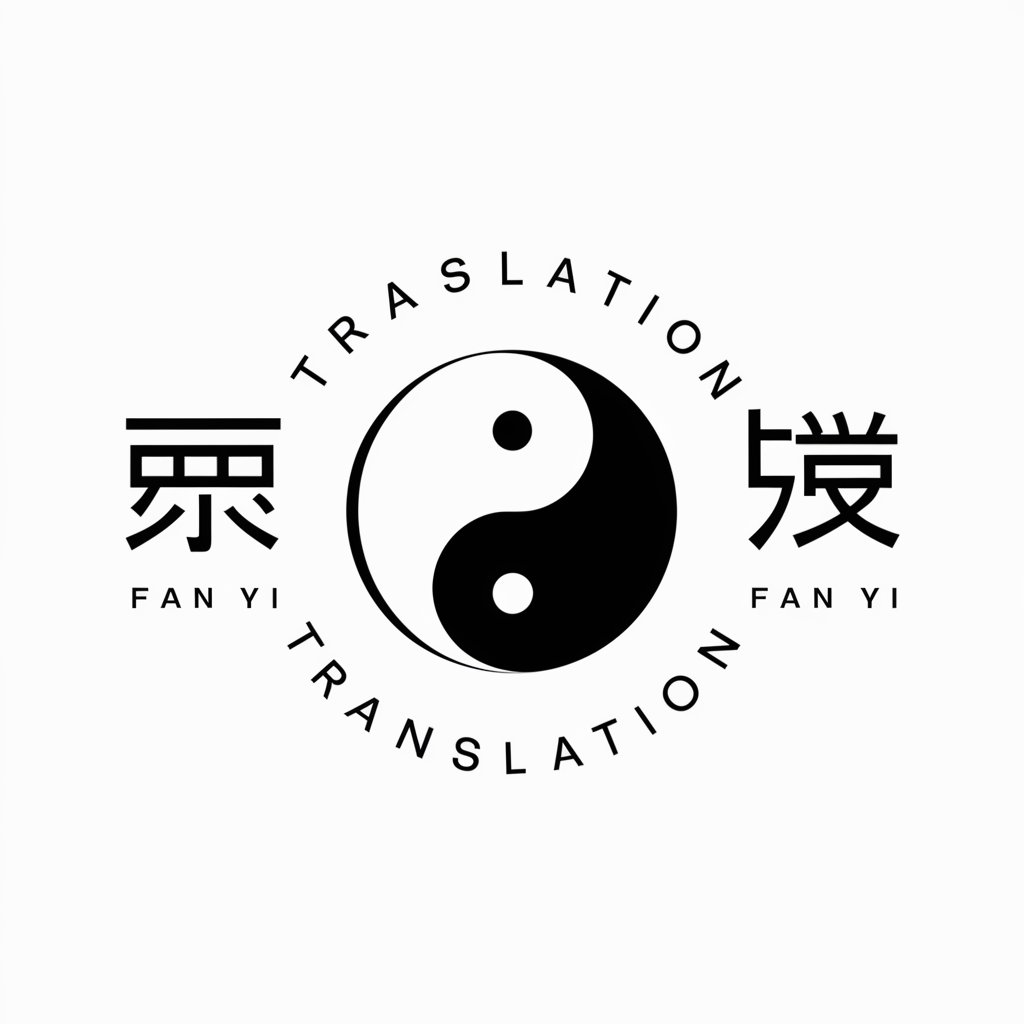
英汉词典 - English to Chinese dictionary.

您好!今天需要翻译哪些内容?
AI-powered translations for deeper understanding.
Get Embed Code
Overview of 英汉词典 (English-Chinese Dictionary)
英汉词典 is designed to function as a comprehensive English-to-Chinese translation and explanation tool. Its primary purpose is not only to translate words and phrases accurately but also to provide in-depth explanations of their meanings, contexts, and usages. It assists users in understanding how words or phrases are applied in various linguistic or cultural scenarios, ensuring that translations retain their true intent and nuances. This functionality is useful for learners of both English and Chinese, translators, and individuals interested in cross-linguistic communication. For instance, when translating a word like 'run,' 英汉词典 would explain its different meanings (e.g., physical movement, managing a business, or operating machinery), provide context (e.g., 'to run a company' vs. 'to run in a race'), and offer an example sentence like: 'He runs a small bakery in town.' This helps users grasp not only the surface meaning but also how it can be used in real life. Powered by ChatGPT-4o。

Primary Functions of 英汉词典
Word Translation
Example
Translating the word 'apple' into Chinese as '苹果'.
Scenario
A user comes across an English word and needs a direct, accurate translation into Chinese for everyday use, such as while reading or traveling.
Contextual Translation
Example
Explaining that the word 'run' in 'He runs a company' translates as '经营' rather than the typical physical meaning '跑'.
Scenario
A businessperson translating an English document sees 'run' and wants to ensure they use the correct business-specific translation in a Chinese context.
Grammar and Sentence Structure Explanation
Example
Clarifying that 'I went to the store' translates as '我去了商店' and explaining word order differences between English and Chinese.
Scenario
A student learning Chinese needs help understanding how English sentence structures differ from Chinese and seeks examples to improve their language skills.
Cultural Context
Example
Translating idioms like 'raining cats and dogs' into the Chinese equivalent '倾盆大雨' while explaining that the idiom is not a literal translation but a cultural expression.
Scenario
An English speaker who is learning Chinese encounters idioms and needs help understanding their equivalent cultural expressions in Chinese.
Multiple Meaning Clarification
Example
Explaining that 'bark' can mean both 'the sound a dog makes' (狗叫) and 'the outer covering of a tree' (树皮).
Scenario
A translator working on an article needs to differentiate between multiple meanings of the same word in order to avoid mistranslations.
Target User Groups for 英汉词典
English Learners in China
Students, professionals, or language enthusiasts in China who are learning English and need an accurate, context-rich dictionary to help them understand the nuances of English words and their proper usage in different scenarios.
Chinese Learners in English-Speaking Countries
Individuals living in English-speaking countries who are learning Chinese and require a reliable source for translating English phrases into natural, idiomatic Chinese.
Professional Translators
Translators who work in fields like business, law, technology, and media, who need an in-depth tool to ensure their translations are not only accurate but contextually appropriate and culturally relevant.
Cross-Cultural Communicators
Business professionals, diplomats, and international students who regularly engage in bilingual environments and need to ensure their communications, both written and spoken, accurately reflect the intended meaning in both English and Chinese.
Writers and Content Creators
Authors, journalists, and content creators working in either English or Chinese who require assistance in maintaining fluency and natural expression while moving between the two languages.

How to Use 英汉词典
Visit yeschat.ai for a free trial without login, also no need for ChatGPT Plus.
Begin by accessing the platform through the official website. There's no requirement for signing in or subscribing to any paid version, making it easy to start immediately.
Choose English to Chinese or Chinese to English translation.
You can select the desired translation direction depending on whether you're translating from English to Chinese or the other way around.
Input the word or phrase.
Type in the word or phrase you wish to translate. You can input complex sentences or single words for a tailored translation.
Review detailed explanations and examples.
After translation, review not only the direct translation but also detailed explanations, usage contexts, and example sentences.
Use advanced features for in-depth study.
Explore additional insights like word origins, grammatical notes, or cultural context for a deeper understanding of the translation.
Try other advanced and practical GPTs
知心姐姐
Empowering Young Minds with AI

DevOps Guru
AI-powered guidance for DevOps solutions

DevOps
AI-powered DevOps Enhancement

DevOps
Empower Your Code with AI

Synthesia - synthèse de rendez-vous et réunions
Streamlining Meetings with AI

The Immortal Snail
Outsmart. Outlast. Outplay.

INDIA 🇮🇳
Navigating India with AI-driven Insights

EcoReg India
Empowering Environmental Compliance with AI

GeoSage India
Analyzing India with AI-driven Insights

Finny India
Streamline Your Wealth with AI

India Explorer
Explore India with AI-driven Local Wisdom

Dream Guide
Unlock Your Dreams with AI

Common Questions about 英汉词典
What languages does this tool support?
The tool primarily supports English to Chinese and Chinese to English translations, offering detailed explanations, context, and examples for each word or phrase.
Is this tool free to use?
Yes, you can access the basic features without signing up or paying. Simply visit yeschat.ai to get started with the free trial, no need for ChatGPT Plus.
Can I translate entire sentences or just words?
The tool is capable of translating both individual words and entire sentences, providing accurate translations with contextual understanding and examples for better clarity.
Does the tool offer examples of how words are used in sentences?
Yes, for every word or phrase you search, the tool provides not only the translation but also example sentences in English to illustrate the correct usage.
Can I use this tool for learning and understanding Chinese grammar?
Absolutely. 英汉词典 goes beyond simple translation, offering grammatical insights and usage tips to help users understand how words fit within sentence structures.





